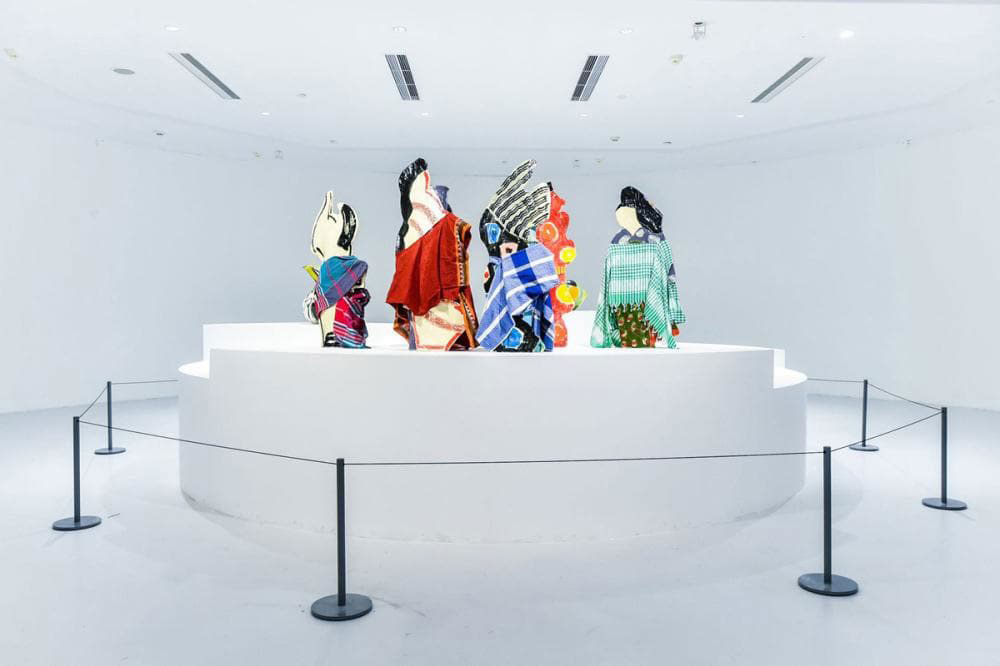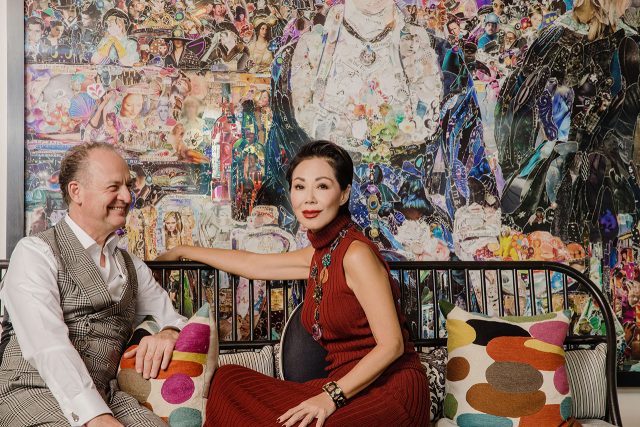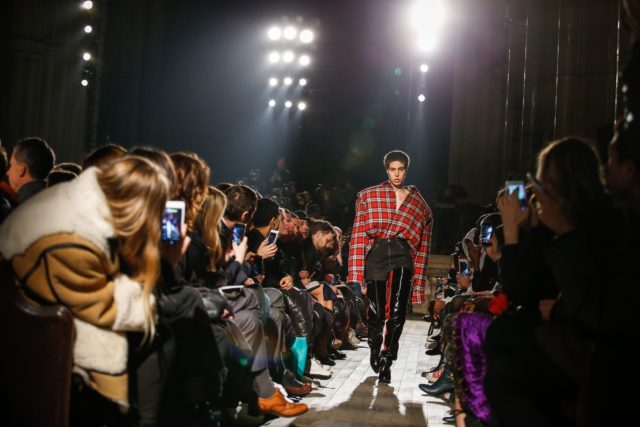
Adrian Cheng doesn’t walk into a room; he seems to miraculously appear. One second you might be leafing through a special art issue of a luxury lifestyle magazine featuring him on the cover, and the next he’s standing before you immaculately tailored in a Savile Row suit, holding out his right hand to be shaken, and slipping you his business cards (yes, plural) in his left.
The heir to the New World Development property company and Chow Tai Fook Jewellery Group, Cheng has become something of a powerhouse in Asian art since he established the K11 Art Foundation, a multifaceted not-for-profit dedicated to championing contemporary Chinese artists around the globe, back in 2010. At his offices on the 40-something floor of the Hong Kong New World Tower during Art Basel Hong Kong (ABHK) – his schedule spectacularly overflowing with gallery openings, client meetings and collector dinners – he speaks candidly (and rapidly) about how he wants to change the status quo in his home country.
An art installation by Jean Jullien at K11 Mall. (Photo: K11)
To Cheng, art in China is “too market-driven right now”, and has yet to consolidate its own point of view. “It’s rare to see a curatorial direction that is home-grown; everything is imported because there is not a lot of art education. If you look at the greater China region 10 years ago,” he adds, “people didn’t go to art museums and galleries because there weren’t any.” That’s where the K11 Art Foundation comes in, which has designed a unique method of bringing art to a broader audience by displaying it not in galleries but in some of the most commercial and high-traffic environments of all – shopping malls. The raison d’etre for the foundation is simple: “Everyone is creative, and has a right to discover and learn about art”. And it’s gaining traction – by 2022 there will be K11 museum retail chains in nine cities across China.
Earlier in the day, I visit the site of Cheng’s most ambitious project to date: Victoria Dockside, a 3 million-square-foot former warehouse terminal on Hong Kong’s harbourfront, which Cheng is reimagining as a global art and design district, set to open in the second half of 2019. Victoria Dockside is part of a thorough shake-up of Hong Kong’s cultural landscape. Last year’s ABHK saw the opening of H Queen’s in Central – a 24-storey tower housing seven local and international galleries, including David Zwirner, Hauser & Wirth and Pace, which held inaugural solo shows by Wolfgang Tillmans, Mark Bradford and Yoshitomo Nara respectively. Just a few blocks away is Tai Kwun, a former police station that Swiss architects Herzog & de Meuron transformed into an arts centre. Then later this year, M+, Hong Kong’s museum of visual culture, part of a titanic project less than 10 minutes’ drive from Victoria Dockside, is slated to open its doors and transform the West Kowloon area of Hong Kong into another cultural hotspot.
These seismic shifts in Hong Kong’s shorelines and skylines is a direct reflection of China’s voracity for art, and the country’s exponentially increasing presence in the art market. Chinese mega collectors have made headlines in recent years with their record-breaking purchases, namely Liu Yiqian who charged over US$170 million to his Amex for Modigliani’s Reclining Nude at a 2015 Christie’s auction. According to economist Dr. Clare McAndrew, today China accounts for an estimated 21 percent of global sales compared to 9 percent in 2008, and at the epicentre of this boom is Hong Kong, which accounts for more than 50 percent of the imports of art to Asia.

Installation view of Betty Woodman’s Kimono Ladies, House and Universe exhibition in Shanghai. (Photo: K11)
Cheng, an avid collector (a cryptic hashtag on his Instagram suggests Bradford’s Adventure City was a recent acquisition) whose family is reportedly worth $22.5 billion, is part of this percentile. However he wants to avoid looking at art through a pecuniary lens, and shift the focus away from China’s economic prowess and onto its cultural capital. His mission with K11 is not only to promote contemporary Chinese artists, but also cultivate a cultural dialogue between East and West, and ultimately foster a more global artistic community. Over the years, K11 has collaborated with some of the most revered western cultural institutions, including the Museum of Modern Art in New York, the Pompidou Centre in Paris and London’s Serpentine Gallery, staging world-class exhibitions of Chinese artists’ works. In the foundation’s Hong Kong space, the group show Emerald City opened during ABHK, featuring artists from all over the world.
“Having an outside perspective on Chinese contemporary culture is good so you can see a different perspective,” Cheng concludes. “But we need our own voice, our own art critics assessing what is good and what is not, rather than just it just being a western interpretation – there has to be balance.” It’s a view shared by M+ Executive Director Suhanya Raffel, who believes that with the opening of cultural districts like West Kowloon and Victoria Dockside change is imminent. “In the same way that in the early 20th century, the centre of modern art moved from Paris to New York, the same will happen with Hong Kong,” she says. “It’s time now, in the 21st century, that the stories of Chinese art are spoken from where they are made.”
Originally published on Vogue Australia.
Editor
Liam FreemanCredit
Header photo: Handout



